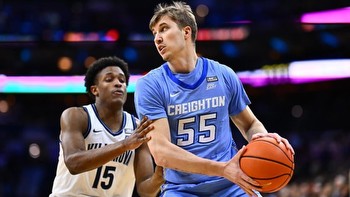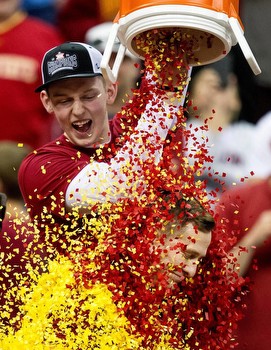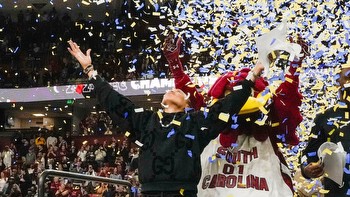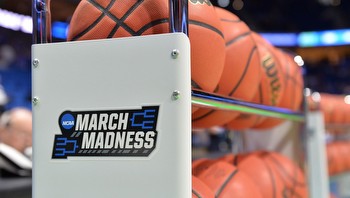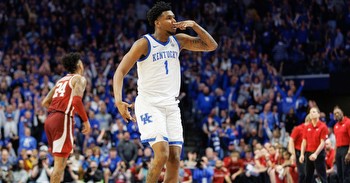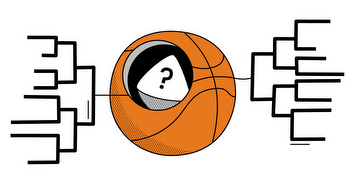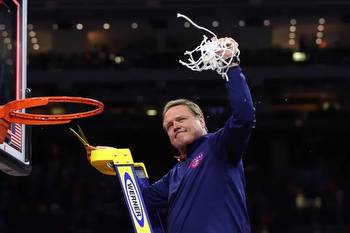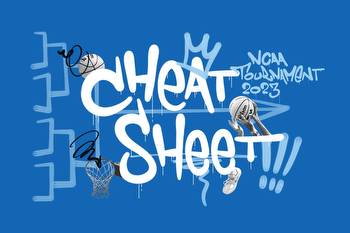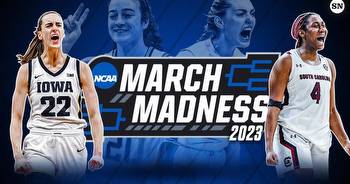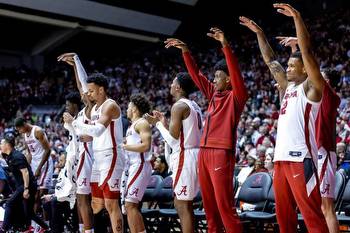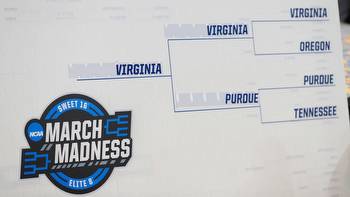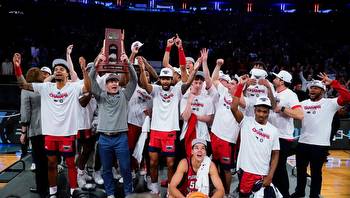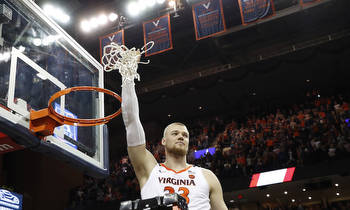15 rules for filling our your 2023 March Madness bracket
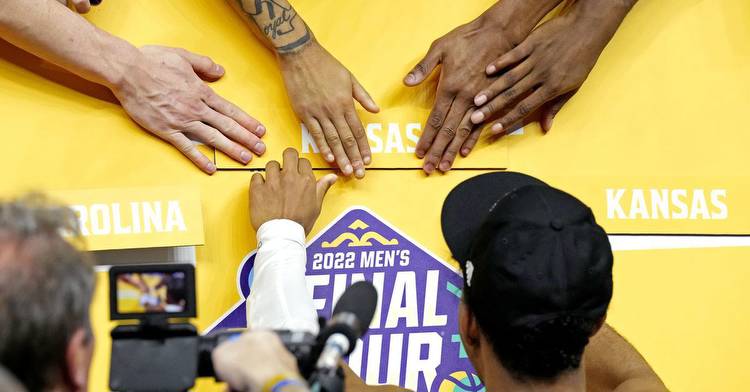
The field of 68 is official, which means that at some point between now and early Thursday afternoon, you’re probably going to be asked to fill out a bracket. It’s always a daunting task, but especially in a year like this where the field seems to be as wide open as it’s ever been.
Thankfully, we’re here to help with 15 bracket tips you can ride to an admirable finish in your bracket challenge.
1. Believe in at least one power conference underachiever.
One of the longest active March Madness streaks that isn’t discussed enough is that a power conference team seeded 9th or worse has reached the Sweet 16 in every NCAA tournament since 2008. A year ago, three of them reached the Sweet 16 — 10th-seeded Miami and 11-seeds Iowa State and Michigan.
Teams that fit that description this year:
West Virginia (9)Auburn (9)Illinois (9)Penn State (10)USC (10)
Providence (11)Pittsburgh (11)So choose your favorite sort of underwhelming big brand program and take the farther in your bracket than they probably have any business going.
2. Get a little wild with one Final Four pick.
Sure it’s scary to take one team that could easily lose in the first round and advance it all the way to the Final Four, but it also might be the key to winning your bracket pool. Every single Final Four but one since 2012 has featured at least one team seeded No. 7 or worse. Since 2011, a total of 11 teams seeded seventh or worse have crashed the season’s final weekend.
A year ago, it was 8th-seeded North Carolina knocking off arch-rival Duke in the Final Four and then nearly taking down Kansas to win the national title.
The only recent season in which a 7-seed or worse hasn’t made a Final Four was 2019, and even then, you had a 5-seed crashing the party. So take the three teams you like the most to the Final Four, and then maybe throw a dart in the region (looking at you, East) where you feel like the top seeds are the most vulnerable.
3. Believe in at least one “First Four” team.
Even though the “First Four” — those four games typically played in Dayton on Tuesday and Wednesday featuring the lowest-seeded four teams in the field and the last four at-large teams to get in — has been fairly controversial and often mocked since its inception in 2011, a team coming out of Dayton has won at least one game in the tournament’s “main draw” in every year but one since the First Four became a thing. The only time it hasn’t happened was in 2019.
Overall, the First Four has produced a total of 20 victories in the “main draw” of the tournament, five Sweet 16 squads, and two Final Four teams, the most recent being UCLA two seasons ago.
While Pitt, Mississippi State, Arizona State and Nevada might look underwhelming to you on paper, it’s a safe bet that at least one of them will still be around come Saturday or Sunday.
4. Don’t pick a No. 5 seed to win it all.
This year’s tournament is being widely labeled as one of the most wide-open of all-time. With that being the case, you may find yourself entertaining the idea of picking a national champion that is a bit off the beaten path. That’s fine. A lot of things can happen in March. But a 5-seed winning the national title doesn’t seem to be one of them. Every seed line from 1-8 has produced at least one national champion besides the 5-seed line.
No. 5 seeds have made it to the title game three times (nearly four after Auburn’s narrow loss to Virginia in the 2019 Final Four), but have never been able to be the last team standing.
Our most sincere apologies to Miami, San Diego State, Saint Mary’s and Duke.
5. Pick at least one 12 seed to win in the first round. The 12/5 upset has a reputation for a reason.
The 12/5 upset is a March Madness tradition unlike any other.
In 32 of the last 37 years, at least one 12 seed has advanced out of the first round of the tournament. Over the last 14 years, 12 seeds actually own a highly respectable overall record of 25-31 against five seeds. A year ago, both Richmond and New Mexico State prevailed in the first round, with the Aggies nearly upsetting Arkansas in the second round two days later.
6. Take a close look at the 13/4 matchups as well.
We just talked about the frequency of the 12/5 upset in the NCAA Tournament, but how about some love for the work the No. 13 seeds have been putting in recently? At least one 13 seed has won a game in the tournament in 10 of the last 14 years.
A year ago, 13-seeds went 0-4 in the first round, but all four of those games were won by single-digits. Chattanooga led Illinois from almost start to finish before losing by a point, while Akron and Vermont both lost their games by four.
A healthy chunk of small conference tournaments were won by favorites this season, which means the 13, 14 and 15 seed lines are even stronger than usual. That’s not a guarantee for first round chaos, but it’s a pretty solid sign that some wacky results are very possible.
7. No. 3 seeds from the Big 12 are on upset alert.
Twenty-two 14 seeds have upset 3 seeds since the tournament field expanded in 1985. It has happened just four times since 2015, and in each of those four instances, the No. 3 seed has been from the Big 12 — UAB over Iowa State in 2015, Georgia State over Baylor in 2015, Stephen F. Austin over West Virginia in 2016, and Abilene Christian over Texas in 2021.
A pair of Big 12 teams find themselves on the 3-seed this year. Overachieving Kansas State will take on Montana State in the East Region, and Baylor will face UC-Santa Barbara in the South.
The Bears also have another March trend working against them: No team has ever lost the first game of its conference tournament and gone on to win the NCAA tournament. Baylor is the highest-seeded team in this year’s tournament that went one-and-done in their league tourney.
8. Don’t automatically move all four No. 2 seeds to the second weekend.
In 23 of the last 25 years, at least one No. 2 seed has been knocked out of the tournament before the Sweet 16. Straying from the chalk is always scary, especially before the second weekend, but you need to conquer that fear in at least one region.
Last season, Kentucky was stunned by Saint Peter’s in the first round, and Auburn was pummeled by 10-seed Miami in the second.
Another note here: There have been 22 No. 2 seeds in tournament history that started the season unranked and entered the tournament ranked in the top 10. Fourteen of those 22 teams have failed to make it to the Sweet 16. One team fits that description this year: Marquette.
9. Be wary of the Mountain West.
With San Diego State, Utah State, Boise State and Nevada all dancing, the Mountain West has more teams in this year’s field than any conference outside of the so-called “Power 6.”
Of course the Mountain West also had four teams in the tournament a year ago ... and all four were eliminated before the Big Dance’s first Friday. Not only that, but all four teams failed to reach the 70-point mark, with Wyoming and Boise State both failing to get to 60.
Despite its status as a near perennial multi-bid league, the Mountain West is just 3-15 in the NCAA tournament since 2015 and has sent just one team to the tournament’s second weekend over that same time span. Since 2016, the conference is 1-11 in first round games.
Last year’s embarrassment made the Mountain West just the third conference in NCAA tournament history to finish 0-4 or worse in a single March Madness. In all, Mountain West teams have lost nine consecutive games in the NCAA tournament.
10. You need at least one “surprise” Elite Eight team.
Maybe you’re not comfortable getting too crazy with your Final Four, but at least make sure your Elite Eight has some flavor. In each of the last 11 seasons, at least one team seeded fifth or worse has played in a regional final, and in 10 of the last 11 seasons, at least one team seeded 7th or worse has advanced to a regional final. We’ve also seen at least one double-digit seed in the Elite Eight in five of the last six years.
Last year’s regional finals featured a 10-seed in Miami, and for the first time ever, a 15-seed in Saint Peter’s.
11. Conference championships typically matter.
In the history of the NCAA tournament, there have only been four national champions (who participated in a conference tournament) that didn’t first win either their league’s regular season or postseason title. Villanova in 1985, Kansas in 1988, Connecticut in 2014, and Duke in 2015 are the only exceptions.
All teams on the top two seed lines fit that description this year, but only one No. 3 seed — Gonzaga — does.
12. Be wary of the tournament’s No. 1 overall seed.
The NCAA tournament selection committee began designating a No. 1 overall seed in 2004. Since then, that team has gone on to win the national championship just three times — Florida in 2007, Kentucky in 2012, and Louisville in 2013.
It’s not exactly news that the best team doesn’t always win this thing, but it is a bit jarring to see just how rarely the team most people believe to be the best going into the tournament actually winds up cutting down the nets.
A season ago, the tournament’s top overall seed, Gonzaga, was upset in the Sweet 16 by Arkansas. That disappointment came a year after the Zags lost to Baylor in the national title game the year before, also while carrying the banner of being the tournament’s No. 1 overall seed.
It’s been a decade now since the pre-tournament king has gotten the job done. Alabama, you’re on the clock.
13. Be mindful of the Big Ten/West Coast drought.
One of the longest-running debates in college basketball is when a team from the West Coast or the Big Ten will win its next national title. It has reached a fever pitch the last couple of seasons with the Big Ten appearing to be the best conference in the sport and a resurgent West Coast producing multiple national title contenders.
A team from the Big Ten team hasn’t won it all since Michigan State in 2000, and a West Coast squad hasn’t cut down the nets since Arizona stunned Kentucky in 1997. Purdue, UCLA, Gonzaga, Arizona, Indiana and a handful of others have their sights set on breaking at least one of these streaks of futility in the weeks ahead.
14. Gonzaga and Kansas are early locks.
Since 2008, there are only two teams that have appeared in every single NCAA tournament without losing a single first round game: Gonzaga and Kansas. The Bulldogs also have the longest consecutive run of Sweet 16 appearances, making it to the tournament’s second weekend in every year since 2014.
If for some reason you were predicting an early exit for either of these perennial powerhouses, well, re-think that.
15. Don’t feel bad about picking a No. 1 seed to win it all.
Even if you’re not going with the overall No. 1 seed (see rule No. 12), don’t let anybody shame you for picking a top seed to cut down the nets. Since seeding the field began, No. 1 seeds have won more national titles (25) than all other seeds combined (17).
A No. 1 seed has won each of the last five national titles, six of the last seven, and eight of the last 10. Also, if we assume Baylor would have been a No. 1 seed in the canceled 2020 NCAA tournament, five of the last six national champions were a No. 1 seed the year before. The 2022 No. 1 seeds: Gonzaga, Baylor, Arizona and Kansas.

